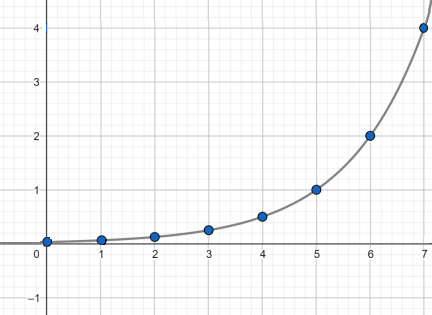Ecology Pt.2
5.0(1)
Card Sorting
1/31
Study Analytics
Name | Mastery | Learn | Test | Matching | Spaced |
|---|
No study sessions yet.
32 Terms
1
New cards
Animal Behavior
the study of how animals move in their environment, how they socially, how they learn about their environment, and how an animal might achieve cognitive understanding of its environment
2
New cards
Kinesis
the nondirectional movement of an organism or cell in response to a stimulus
3
New cards
Taxis
an innate behavioral response by an organism to a directional stimulus.
4
New cards
Classical conditioning
arbitrary stimulus associated with particular outcome
5
New cards
Operant conditioning
a type of associative learning that’s based on reinforcement or punishment to modify a conditioned behavior
6
New cards
Cognition
process of knowing that involves awareness, reasoning, recollection, judgment
7
New cards
Population growth formula
dN/dT = B - D (dN = change in pop size; dT = change in time; B = birth rate; D = death rate
8
New cards

exponential population growth
ideal conditions; population grows rapidly
9
New cards
Exponential Growth Equation
dN/dT = rN (dN/dT change in population; r = growth rate of pop.; N = population size)
10
New cards
Logistic Growth
population expansion decreases as resources become limited; levels off when carrying capacity is reached
11
New cards
Logistic growth formula
dN/dt = rN((K-N)/K) (dN/dT change in population; r = growth rate of pop.; N = population size; K = carrying capacity)
12
New cards
K-selection
* Population close to carrying capacity
* Live around K
* High prenatal care
* Low birth numbers
* Good survival of young
* Density-dependant
* Live around K
* High prenatal care
* Low birth numbers
* Good survival of young
* Density-dependant
13
New cards
r-selection
* Maximize reproductive success
* exponential growth
* little or no care
* high birth numbers
* poor survival of young
* density independant
* exponential growth
* little or no care
* high birth numbers
* poor survival of young
* density independant
14
New cards
Density- dependant factors
factors that affect the population based on density
* Predation
* disease
* competition
* territoriality
* toxic wastes
* physiological factors
* Predation
* disease
* competition
* territoriality
* toxic wastes
* physiological factors
15
New cards
Density-independent factors
factors that affect the population size and doesn’t depend on density or size
* natural disasters (fire, flood, weather)
* natural disasters (fire, flood, weather)
16
New cards
Carrying capacity
* the number of people, other living __organisms__, or __crops__ that a region can support without environmental degradation.
* when close to it, resources become more partitioned, resulting in niche partitioning
* when close to it, resources become more partitioned, resulting in niche partitioning
17
New cards
Niche partitioning
decrease in competition over limited resources because each species is accessing the resource in different ways
18
New cards
Mark & Recaptured Method
used to estimate the size of a population
19
New cards
Mark & Recaptured Method Formula
N = MT/R (N = predicted pop. size; M = Marked; T = total # of organisms in second collection; R = # of recaptured that are marked)
20
New cards
Interspecific interactions
interactions between species
21
New cards
Competition (-/-)
the direct or indirect interaction of organisms that leads to a change in fitness when the organisms share the same resource; bad for both species
22
New cards
Predation (+/-)
the preying of one animal on others
23
New cards
Herbivory - (+/-)
the consumption of plant material by animals
24
New cards
Facilitiation - (+/+ or +/0)
create new landscapes or habitats (ex: beaver or sea otters)
25
New cards
Symbiosis
2+ species live in direct contact with one another
26
New cards
Parasitism (+/-)
\n parasites attatches to and harms organisms by draining nutrients
27
New cards
Mutalism - (+/+)
both species benefit (ex: bee and flower)
28
New cards
Commensalism
species 1 benefits, 2 isn’t affected
29
New cards
Keystone species
exert control on community structure by their important ecological niches - **increase community diversity** (wolves and sea otters)
30
New cards
Facilitating Species
one species positively impacts the fitness of another (intertidal mussels)
31
New cards
Simspon’s Diversity Index
diversity based on species richness & relative abundance; higher diverse communities are more resistant to invasive species
32
New cards
Simpson’s Diversity Index Formula
D = 1- Σ(n/N)^2